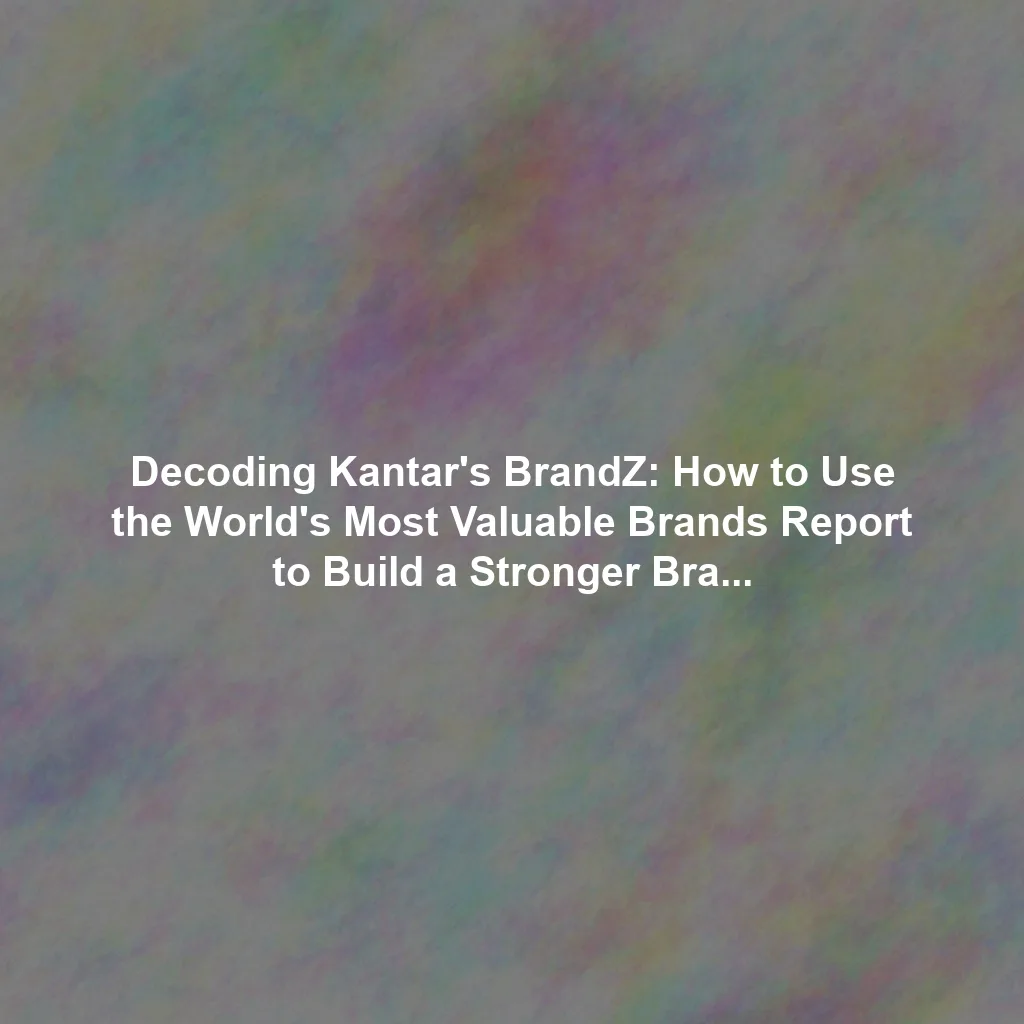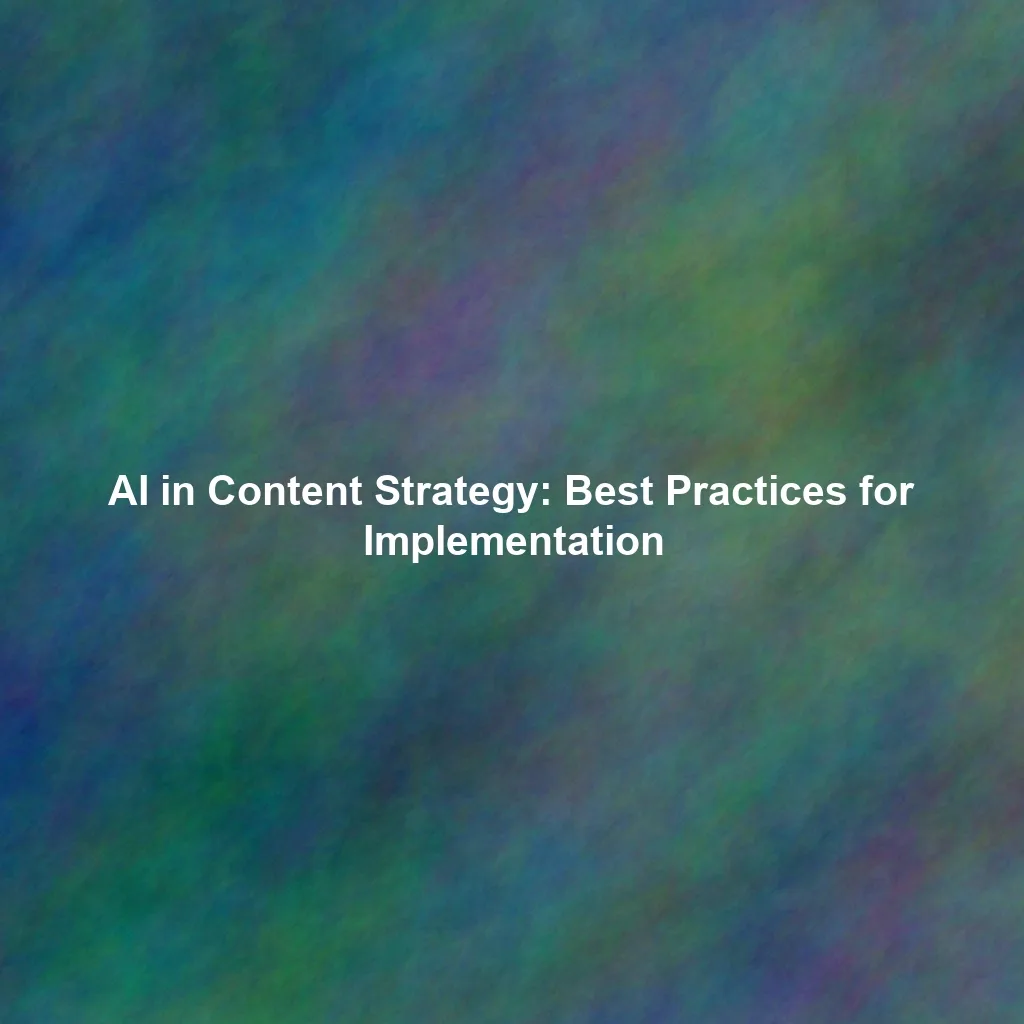- Cold, Hard Financial Data: They crunch the numbers, the publicly available financial reports, to see just how much the brand contributes to the overall revenue stream. It’s about isolating the financial muscle of the brand.
- The Brand’s Cut: This is where it gets interesting. They don’t just look at total revenue; they try to pinpoint the portion of those earnings that are directly attributable to the brand’s pull with consumers, its inherent strength in the market. This is where perception meets profit.
- Voice of the Customer: This is the big one, the differentiator. Kantar doesn’t just look at spreadsheets; they talk to millions of actual consumers across the globe. They’re digging into what people think, feel, and believe about brands across a whole range of touchpoints. This massive consumer research effort is the heart and soul of the BrandZ methodology. It’s about understanding brand equity from the people who ultimately decide whether to buy or not.
At the core of their analysis is this proprietary thing called the Brand Power indicator. Think of it as a composite score for brand equity, distilled from all that consumer data. And it rests on three fundamental pillars:
- Meaningful: Does the brand actually connect with people? Does it solve a problem, meet a need, or align with their values? Is it relevant in their lives? It’s not just about being present; it’s about offering something of genuine value. For instance, a brand like Mayo Clinic is meaningful because it’s associated with trusted healthcare and expertise.
- Different: In a sea of choices, does the brand stand out? Does it have a unique selling proposition, a distinct personality, or an innovative approach? It’s about carving out your own space and not just being another me-too option. Look at Tesla; they didn’t just make another electric car, they redefined what an electric car could be.
- Salient: When consumers are making a decision in your category, how readily does your brand come to mind? Is it top-of-mind awareness? It’s about being memorable and easily recalled when it matters most. Think about Google when you need to find information online – it’s become almost synonymous with searching.
Understanding these three pillars – Meaningful, Different, Salient – is your starting point. Don’t just fixate on Apple being number one. Instead, dissect *why* they consistently land at the top. What is it about their approach that makes them so meaningful, different, and salient in the eyes of their massive customer base? That’s where the real learning begins.
Now, let’s move beyond the horse race of the rankings and get into the actionable stuff. The real gold in the BrandZ report isn’t the order; it’s the detailed breakdown and the insights that can actually inform your strategy.
Benchmarking Against Your Peers
First things first, zero in on your industry within the BrandZ rankings. Who are the top dogs? What are the common threads linking their success? What strategies seem to be paying off for them? Identify the key drivers of brand equity in your specific sector. Then, take a hard, honest look at how your brand measures up against these benchmarks. It’s about understanding the competitive landscape and where you fit in the pecking order on these crucial dimensions. For example, if you’re in the enterprise software space, you might compare the BrandZ performance of Microsoft, Salesforce, and SAP. What are the perceived differences in their offerings, their customer relationships, and their overall brand strength?
Deep Dive into the MDS Pillars
The BrandZ report often provides a granular view of how brands perform across those ‘Meaningful, Different, Salient’ pillars we talked about. This is where you can really pinpoint your brand’s strengths and, more importantly, its weaknesses. Are you nailing the ‘Meaningful’ aspect, genuinely meeting customer needs, but falling flat on ‘Differentiation’? Or maybe you’ve got a unique offering (‘Different’) but aren’t connecting with consumers on an emotional level (‘Meaningful’) or staying top-of-mind (‘Salient’)? The goal here is to identify the weakest link in your brand equity chain and focus your efforts there. Say your brand scores high on being meaningful and different, but lags in salience. That’s a clear signal to ramp up your marketing and communication efforts to boost awareness and recall.
Spotting Trends and Disruptors
Kantar’s analysis often flags emerging trends and the disruptors shaking up various industries. Pay close attention to these insights. How might these shifts – be it technological advancements, evolving consumer values, or new competitive threats – impact your brand in the short and long term? Are there opportunities to get ahead of the curve or potential pitfalls to avoid? For instance, if the report highlights the growing consumer demand for sustainable practices, you’d be wise to assess your brand’s environmental footprint and communicate any relevant initiatives effectively. Ignoring these broader trends can leave your brand looking outdated and out of touch.
Global vs. Local Lessons
The BrandZ report also often differentiates between the strategies and performance of global behemoths and more localized players. Analyze what each type does well. Global brands often leverage consistency and economies of scale to build broad recognition. Local brands, on the other hand, might have a deeper understanding of specific cultural nuances and local consumer needs. Think about how a global brand like Coca-Cola maintains a consistent brand identity worldwide while also adapting its marketing to local tastes. Conversely, a successful regional grocery chain might thrive by deeply understanding the preferences of its local customer base. The key is to figure out which elements of global best practice can be adapted to your local context and how you can leverage your local knowledge for a competitive edge.
Okay, you’ve done the digging, you’ve extracted the insights. Now comes the crucial part: turning those insights into tangible actions that will actually move the needle for your brand.
Sharpening Your Brand Positioning
Based on how your brand stacks up across the Meaningful, Different, and Salient pillars, it might be time to revisit your core brand positioning. How can you better articulate your value proposition in a way that truly resonates with your target audience and clearly differentiates you from the competition? This might involve refining your messaging, updating your visual identity, or even adjusting your product or service offerings. It’s about ensuring your brand stands for something clear, compelling, and relevant in the minds of consumers. For example, if the BrandZ data suggests your brand is seen as meaningful but not particularly different, you might focus on highlighting your unique innovations or your distinctive brand story.
Elevating the Customer Experience
Brand equity isn’t just about what you say; it’s about what you do. Look for opportunities to enhance the entire customer journey, from the initial point of contact to post-purchase support. Every interaction is a chance to build or erode brand equity. Are there pain points in your customer experience that need addressing? Can you create more delightful and memorable interactions? Think about a company like Zappos, which built a strong brand reputation on exceptional customer service. Their focus on going above and beyond creates positive associations and strengthens brand loyalty.
Strategic Brand Building Investments
A strong brand doesn’t build itself. You need to allocate resources – time, money, and talent – to activities that actively strengthen your brand. This could include targeted marketing campaigns to boost awareness or reinforce your brand message, public relations efforts to shape positive perceptions, or strategic sponsorships that align with your brand values and reach your target audience. The key is to make informed investments that address your specific brand weaknesses and build on your strengths identified through the BrandZ analysis. If your salience is low, a well-executed digital advertising campaign or a strategic partnership could significantly increase brand visibility.
Fueling the Engine of Innovation
In today’s dynamic marketplace, standing still is the same as falling behind. Continuous innovation – whether in your products, services, or customer experience – is crucial for staying relevant and competitive. Pay attention to the trends highlighted in the BrandZ report and identify opportunities to innovate in ways that meet evolving consumer needs and expectations. A brand like Apple consistently ranks high in BrandZ, in part due to its ongoing commitment to innovation and its ability to create products that capture the imagination of consumers.
Measure, Monitor, and Iterate
Building a strong brand isn’t a one-time project; it’s an ongoing process of refinement and adaptation. You need to establish key performance indicators (KPIs) to track your brand’s progress and regularly monitor the impact of your brand-building activities. This might involve tracking brand awareness, customer satisfaction scores, or even your brand’s performance in future BrandZ reports. The data you gather will inform your future strategies and allow you to make necessary adjustments along the way. Think of it as a continuous feedback loop – you take action, you measure the results, and you refine your approach based on what you learn.
In conclusion, Kantar’s BrandZ isn’t just a list to skim; it’s a rich source of insights into the fundamental drivers of brand equity. By taking the time to understand its methodology, diligently analyzing its findings, and translating those insights into concrete, actionable strategies, you can leverage BrandZ to cultivate a stronger, more valuable brand. A brand that not only resonates with consumers but also drives tangible, long-term business success. So, go beyond the headlines. Dive deep. Unlock the power of BrandZ, and put those insights to work.
 Skip to content
Skip to content

